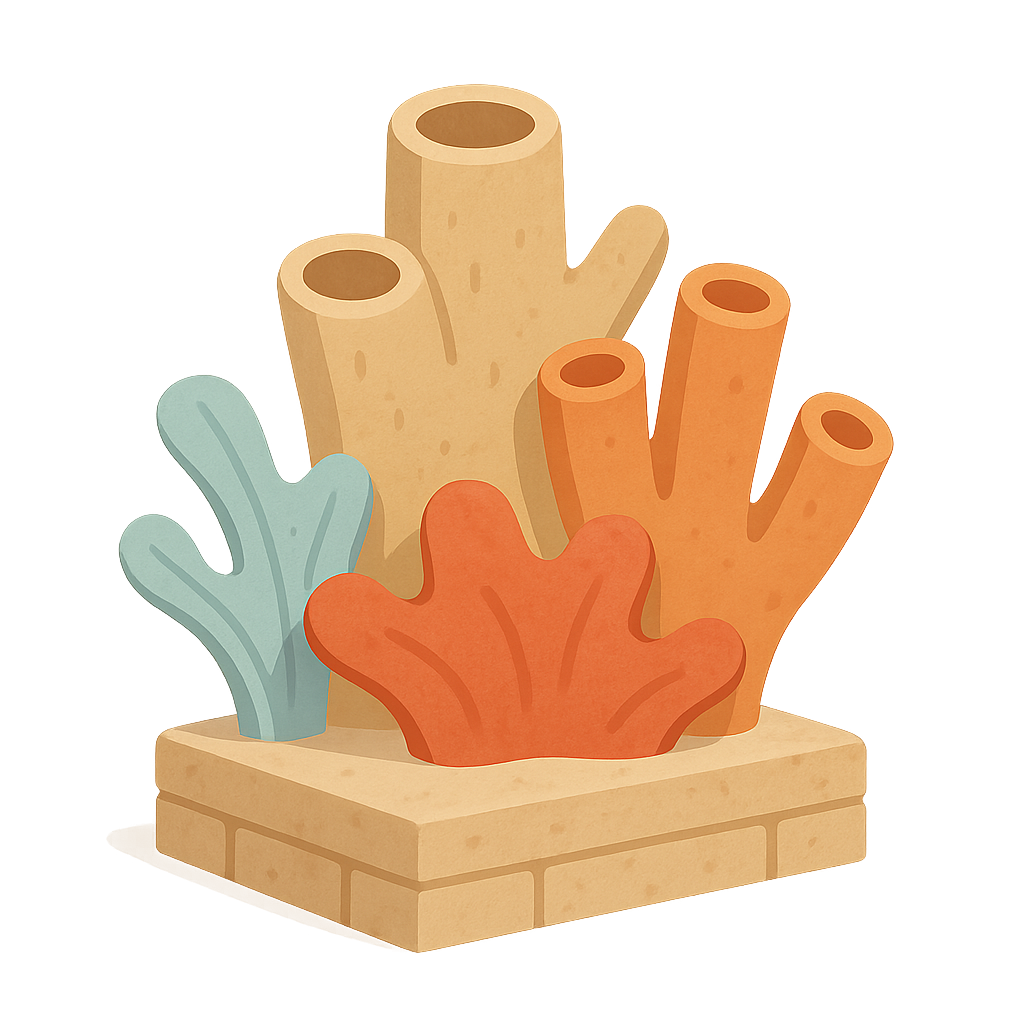The Living City of Color
I am a world of shimmering color and light, hidden just beneath the surface of warm, blue water. Imagine a bustling city, but one where the skyscrapers are made of living stone, sculpted into fantastic shapes over thousands of years. My citizens are not people, but brilliant rainbow fish, ancient sea turtles gliding gracefully through coral canyons, and swirling schools of silver swimmers that move as one. I stretch for so long along the edge of a great, sun-drenched continent that you can see me from space, a delicate turquoise ribbon stitched against the deep blue of the ocean. My gardens are filled with anemones that dance in the currents and giant clams that wear iridescent mantles. For centuries, I have been a place of wonder, a kingdom of life teeming with more creatures than you can count. I am the Great Barrier Reef.
My story did not begin with human hands. I was not built with bricks or steel, but with the patient, tireless work of trillions of tiny creatures called coral polyps. Each one is no bigger than a grain of rice, but together, they are the greatest architects the world has ever known. They began their masterpiece after the last great Ice Age ended about 20,000 years ago. As the massive glaciers melted, the sea levels slowly rose, flooding the coastal plains and creating the perfect shallow, sunlit home for my builders to begin their work. Generation after generation, they built upon the skeletons of their ancestors, reaching ever upward toward the light. Long before my current form took shape, however, this land and these waters were home to the First Peoples of Australia. The Aboriginal and Torres Strait Islander peoples have known me for tens of thousands of years. To them, I am not just a place of beauty, but a vital part of their culture, a sacred source of stories, traditional foods, and spiritual identity. Their connection to me is the oldest and deepest of all, woven into the very fabric of their history. They understand my rhythms and my moods, and their wisdom has helped protect me for millennia.
For most of my existence, the only visitors were those who lived alongside me. But then, in the year 1770, a new kind of canoe appeared on the horizon, much larger and stranger than any I had seen before. It was a tall wooden ship with great white sails, and it was called the HMS Endeavour. Its captain was a determined English explorer named James Cook, who was carefully charting this unknown coastline for his king. He sailed for days along my outer edge, unaware of the vast and complex world that lay just beneath the waves. One calm night, his journey came to a sudden halt. With a terrible scraping sound, his ship struck one of my sharp coral edges and became stuck fast. Panic broke out among the crew as water rushed into the ship. They worked desperately for nearly a full day to save their vessel, finally freeing it and guiding it to the safety of a nearby riverbank for repairs. During those weeks, as they worked to mend their ship, they became some of the first Europeans to truly see me. They explored my shallow lagoons in small boats, marveling at the incredible underwater gardens and the strange, colorful creatures they had never imagined. Captain Cook, both amazed and wary of my power, carefully mapped my channels and warned other sailors of my dangerous, beautiful “labyrinth.” News of his discovery traveled across the oceans, and the world began to learn of the great natural wonder off the coast of Australia.
Today, my waters are filled with visitors from every corner of the globe. They come with masks and fins, eager to swim through my coral canyons and witness the vibrant life I hold. Scientists travel here to study me, hoping to unlock the secrets of the ocean and understand the health of our planet. In recognition of my importance to all of humanity, I was named a UNESCO World Heritage Site in 1981, a treasure to be protected for everyone. But my story has reached a challenging chapter. I can feel the world changing around me. The ocean is growing warmer, and this warmth stresses my tiny coral builders, sometimes causing them to lose their brilliant colors and struggle to survive. This is not an ending, however. It is a call to action. I am resilient, and I have many dedicated helpers. The Traditional Owners continue to use their ancient knowledge to care for me. Scientists are developing clever new ways to help my corals adapt and regrow. And most importantly, young people like you are learning why healthy oceans are vital for our planet. I am a living, breathing wonder, and my story is still being written. By caring for our planet, you help care for me, ensuring my colors will continue to shine brightly for thousands of years to come.
Reading Comprehension Questions
Click to see answer
